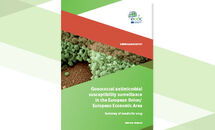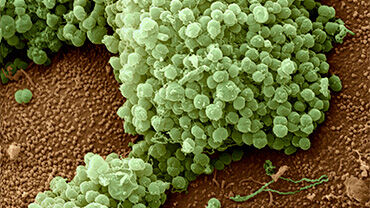Gonococcal antimicrobial susceptibility surveillance in the European Union/European Economic Area - Summary of results for 2020
The surveillance of Neisseria gonorrhoeae antimicrobial susceptibility in the European Union/European Economic Area (EU/EEA) is essential for detecting emerging and increasing antimicrobial resistance. Since 2009, this surveillance has been co-ordinated by the European Centre for Disease Prevention and Control (ECDC). The quality-assured data produced can be used to inform treatment guidelines.
Executive summary
During 2020, as in previous years, the European Gonococcal Antimicrobial Surveillance Programme (Euro-GASP) followed an annual decentralised and centralised testing model, requesting participating laboratories to collect gonococcal isolates during the period September–November. Susceptibility testing was performed on all isolates (MIC gradient strip test (mostly Etest) or agar dilution) for the following antimicrobials, where available: ceftriaxone, cefixime, azithromycin, ciprofloxacin, as well as testing for β-lactamase production to detect high-level penicillin resistance. Decentralised testing took place on the premises of the participating laboratories, fulfilling set quality criteria.
In 2020, 23 EU/EEA Member States participated in Euro-GASP, 19 via decentralised testing. In total, 3 291 isolates were tested, the majority of specimens were from male patients (84.4%), with patient age ranging from under one year to 79 years (median age 30 years). Overall, 25.8% of patients were under 25 years, and males were significantly older than females. The anatomical site of specimen collection was mainly genital (71.6%), followed by rectal (20.0%) and pharyngeal (6.0%). In 2020, as in 2019, data was captured on specific samples from blood (no cases reported), eye (0.3%) and joint fluid (0.1%) infection sites. Among cases with information on previous diagnosis of gonorrhoea (18.0%), 23.6% had previously been diagnosed with the infection. Of the 1 075 cases with information on concurrent sexually transmitted infections (STIs) (32.7%), 20.0% of the patients were concurrently diagnosed with a Chlamydia trachomatis (non-LGV) infection. Among cases with known sex and sexual orientation (55.0%), 28.1% were females, 25.1% were heterosexual males, and 46.8% were men who have sex with men (MSM). Among all cases, 12.3% were HIV-positive and 96.8% of those were MSM.
In 2020, only one isolate with resistance to ceftriaxone (MIC=0.25 mg/L) was detected, in Belgium. The isolate had an azithromycin MIC at the azithromycin epidemiological cut-off (ECOFF) (MIC=1 mg/L) and was ciprofloxacin resistant (MIC>32 mg/L). The Euro-GASP 2020 results revealed that in total 0.5% of gonococcal isolates were resistant to cefixime (MIC>0.125 mg/L), which was a significant decrease from the 0.9% of isolates recorded in 2019 (p=0.02). The number of countries reporting any resistant isolates also decreased from a previously stable fourteen to six.
Since January 2019, the European Committee on Antimicrobial Susceptibility Testing (EUCAST) clinical resistance breakpoint for azithromycin of MIC>0.5 mg/L has been replaced with an ECOFF value of MIC>1 mg/L. Following the significant increases in the proportion of isolates above azithromycin ECOFF in 2018 (7.6%) and 2019 (10.1%), the proportion remained stable at 11.0% in 2020. In 2020, 21 countries recorded at least one isolate with an MIC above the azithromycin ECOFF (MICs >1 mg/L) compared to 24 countries in 2019, 25 countries in 2018, 21 in 2017 and 20 countries in 2016, respectively. The proportion of isolates showing ciprofloxacin resistance remained at a level constant with that observed in 2019 (57.3%) − 57.7% in 2020.
Although dual azithromycin and ceftriaxone resistance is rare, over 10% of isolates had an azithromycin MIC above the ECOFF. Combined with the continued detection of ceftriaxone resistance, this remains a concern and may threaten the currently highly-effective dual-therapy regimen (ceftriaxone plus azithromycin) and high-dose ceftriaxone monotherapy adopted by some European countries. Even though the level of resistance to cefixime has significantly decreased, this needs to be monitored closely, particularly because gonococcal strains with resistance to both cefixime and ceftriaxone continue to be detected in and outside the EU/EEA. The continuation of quality- assured antimicrobial susceptibility surveillance activities, along with the development of alternative gonococcal regimens, is essential to ensure gonorrhoea remains a treatable infection.







